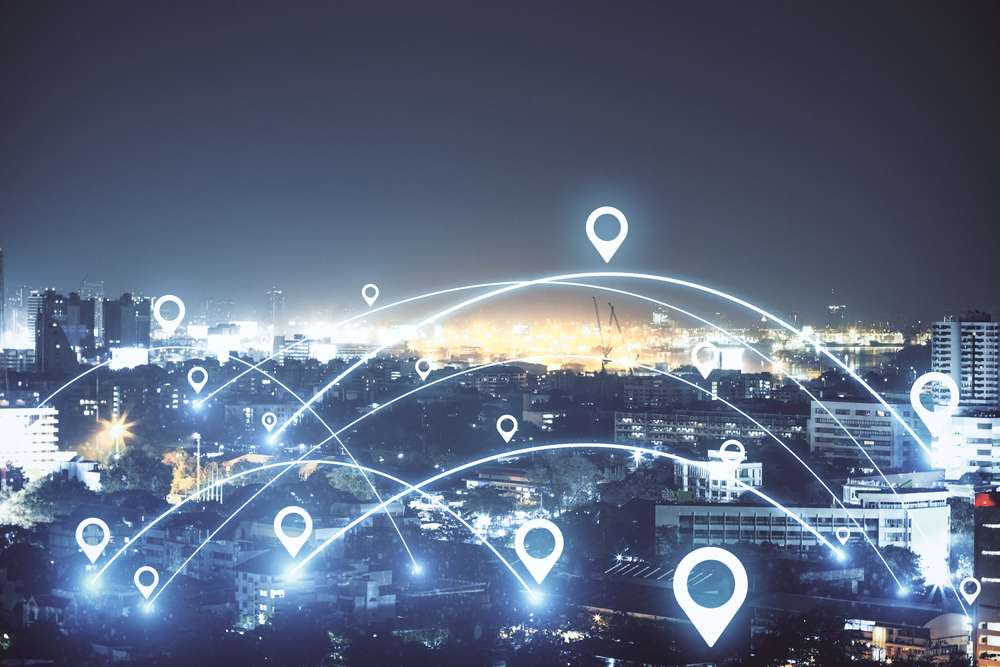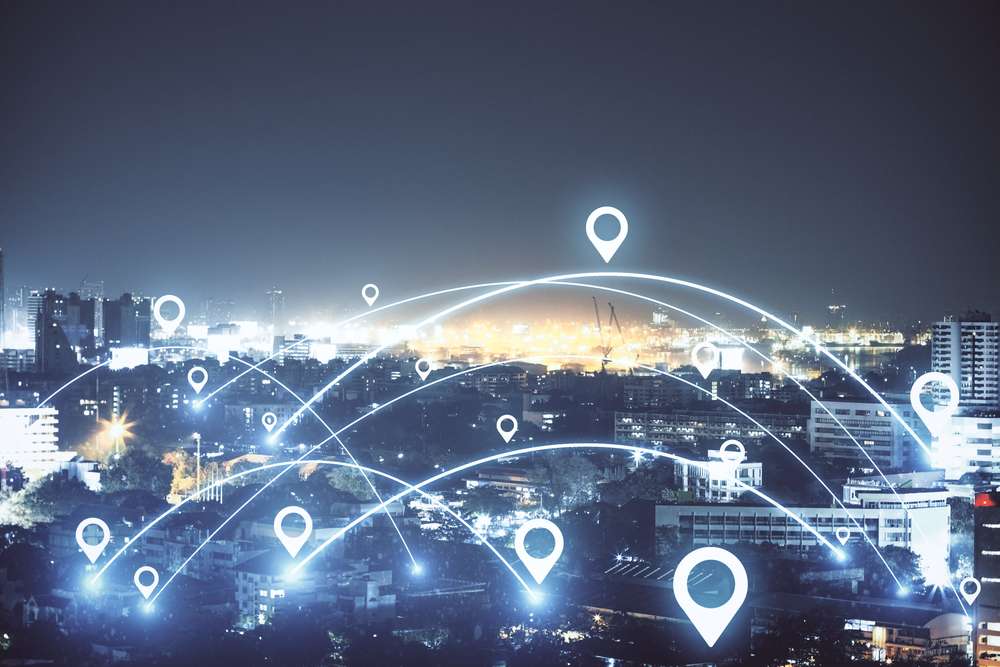
Introduction: Understanding Geolocation and Mobile Learning
In today’s digitally advanced era, the blend of mobile devices in education is no longer seen as a novel concept but as a significant tool for enhancing learning experiences. Among many technological attributes offered by mobile learning or mLearning, geolocation emerges as a compelling feature helping to provide localized and context-specific educational content to learners.
Geolocation, to put simply, is the process of identifying the geographical location of a device or a person using digital information processed via the internet. In our everyday lives, we harness this technology while tagging locations in social media posts, hailing a ride on Uber, or searching for nearby restaurants on Google maps. However, its implications are far more sprawling and enter the domain of mobile learning with profound effects.
Mobile learning refers to the use of mobile or handheld devices, like smartphones, tablets, or laptops, to facilitate learning anytime, anywhere. In mobile learning, the traditional classroom expands well beyond its four walls and takes education to the learner’s environment, not the other way around. Adding geolocation to this learning mode links the educational content to a specific location, making the process more interactive, flexible, and personal.
In the mobile learning context, geolocation invites location-based learning, in which an application provides learning materials corresponding to the learner’s current location. It can be as simple as learning about flora and fauna in a botanical garden or as complex as understanding the historic and cultural importance of a monument.
More impressively, geolocation also facilitates augmented reality (AR) experiences in mobile learning. In this scenario, virtual information overlays the actual, physical environment, providing learners an immersive, engaging, and context-driven learning experience. The popular game Pokémon Go aptly exhibits such a geolocation-based AR experience, effectively demonstrating how virtual interactions can be weaved into real-world environments.
In essence, geolocation in mobile learning integrates the physical and virtual learning spaces and provides learners with an immediate, meaningful, and contextual learning experience. However, as promising as it sounds, implementing geolocation in mobile learning comes with its own set of challenges and considerations, which the upcoming sections will shed light on.
This introductory understanding of geolocation and mobile learning is pivotal in comprehending its importance, contemplating its use, predicting its future developments, and, eventually, harnessing its potential for shaping powerful learning outcomes. With technology pervading every aspect of our lives, it is only beneficial to consider its integration in education to unlock novel ways of learning that align with the evolving needs of our society. Thus, it becomes imperative for every learning development professional to dig deeper into technological aspects like geolocation in mobile learning, opening avenues for more engaging, flexible, and efficient learning experiences.

Importance and Benefits of Geolocation in Mobile Learning
Geolocation in mobile learning is paving the way for an innovative approach to education. It provides a new dimension for user engagement, allowing content to be tailored to a learner’s specific location and context, thereby enhancing the learning experience.
The effectiveness of learning is boosted when it’s made relevant to the learner’s environment, as relevance is known to increase motivation and engagement. Geolocation lets educators contextualize learning, connecting theoretical information with practical applications in real-world settings. In essence, geolocation brings learning to life.
By utilizing geolocation, mobile learning can offer a personalized experience. As learners move from one place to another, the content they access can change according to their new setting. This provides a seamless flow of appropriate and relevant information, ensuring that learning is continuous and adaptable.
Collaborative learning is also enhanced using geolocation. Learners can interact with peers in their vicinity, fostering a sense of community and encouraging shared learning experiences. Geolocation paves the way for location-based assignments, where learners converge at a specific location to complete task, enhancing social learning and communication skills.
The use of geolocation in mobile learning can also facilitate experiential learning, a powerful method whereby learners learn through reflection on doing. For example, history students can visit a historical site, access contextual information via a mobile learning app, and then analyze and reflect on their experience.
Another critical advantage is enhanced learner engagement. Through gamification and immersive experiences, such as treasure hunts, learners may navigate through different points, learn about key concepts and solve problems tied to their specific location. These type of activities are known to increase learner engagement and motivation.
In summary, geolocation injects an element of authenticity, making mobile learning more dynamic, interactive, and personalized. It adds a layer of excitement through gamification and brings learning out of the traditional classroom and into the real world. As such, not only does geolocation benefit learners, but it also offers fresh opportunities for educators and learning development professionals to create more effective and engaging courses.

Examples of Geolocation Use in Mobile Learning Applications
Geolocation technology in mobile apps has brought innovative changes to the learning environment, allowing educators to personalize and optimize learning based on a learner’s location data. There are several exciting real-world examples illustrating the use of geolocation in mobile learning applications.
One prominent example of geolocation use in learning is language learning apps like Duolingo. Duolingo uses geolocation technology to offer language practice and quiz content relevant to the learner’s physical location. This means the app can adjust its content to focus on the language most commonly spoken in the learner’s area. The app also offers phrases and words that would be useful in that location, enhancing the learning experience.
Geocaching apps are another engaging example of geolocation’s use in mobile learning. Geocaching involves outdoor exploration games where participants use GPS devices to hide and seek containers at specific locations worldwide. Educators have adapted this game into a compelling, interactive learning experience. They design quests around particular learning outcomes, with caches containing questions or tasks related to a specific learning topic. Geocaching is not only engaging and fun but also provides opportunities for learners to apply their knowledge and skills in a real-world context.
A further constructive use of geolocation is in cultural education. Applications like Google Earth allow learners to explore different cultures and geographies without leaving their classrooms. Students can virtually visit famous landmarks, explore different terrains, and learn about the cultural significance of these locations. This digital globe lets students feel more connected to the places they’re studying, making their learning experiences more meaningful and memorable.
In the field of environmental education, Project Noah is a tool that allows users to document local wildlife and plant life, contributing to a broader citizen science project. The user’s geolocation data is used to catalog flora and fauna sightings, making it a powerful tool for environmental learning and conservation efforts.
Finally, applications like Fieldtrip allow students to learn about points of interest in their city or coming up on their travel routes. The app uses GPS data to trigger notifications when a point of interest is near, offering opportunities for learners to explore history, architecture, local businesses and more.
These examples show that the use of geolocation in mobile learning is diverse and multifaceted, enhancing the learning experience while promoting curiosity, exploration, and engagement. By converging the real-world element with digital data, geolocation provides a powerful tool for making mobile learning more effective and engaging.

Challenges and Considerations for Using Geolocation in Mobile Learning
While geolocation has exciting potentials for mobile learning development, it also comes with a range of challenges and considerations to keep in mind.
One of the significant challenges in using geolocation in mobile learning is privacy concerns. For geolocation to work, users must willingly share their location. Some learners are hesitant to allow their learning platforms to access their precise coordinates due to privacy concerns. Therefore, it is integral to ensure strong protections for user data and foster a transparent relationship with learners about what information is collected and how it is used.
Data accuracy is another consideration. In some rural or less built-up areas, geolocation can be less precise. Therefore, the use of geolocation in learning platforms might not be equally effective for all users. Developers should consider ways to make geolocation features beneficial even when precise location data isn’t available.
Another challenge is designing an engaging experience that leverages geolocation data effectively. Not all subjects or learning experiences lend themselves straightforwardly to geolocation-based activities. Therefore, instructional designers need to think creativel about how to use this technology to support meaningful, context-rich learning experiences.
It’s also important to consider accessibility. Not every learner has access to a device with reliable geolocation capabilities, which potentially creates a barrier for some users. It’s a vital consideration to maintain an equitable learning experience for all users, irrespective of their device capabilities.
The issue of distraction is often raised in connection with mobile learning. This concern becomes even more prominent when learners are out in real-world environments. To mitigate this, the content for mobile learning should be designed to be engaging, but not overly distracting, and should fit seamlessly into the learning context.
Finally, there’s the matter of resources. Implementing geolocation features into a mobile learning application can require significant time, expertise, and monetary investment. Organizations will need to weigh these costs against the potential learning benefits that geolocation can provide.
In conclusion, while the adoption of geolocation in mobile learning presents a myriad of promising opportunities, it does not come without its challenges and considerations. However, with thorough planning and insider knowledge about these potential obstacles, organizations can create meaningful and engaging geolocation-enabled learning experiences.

Future Trends and Predictions: The Role of Geolocation in Mobile Learning Development
Observing the trajectory of technological innovations, geolocation is bound to assume a more substantial role in mobile learning development. The following significant trends are likely to transform the way students and professionals engage with educational content.
1. Augmented Reality (AR): Geolocation technology is already being harnessed for AR in mobile applications, with the trend set to extend to the learning environment in the foreseeable future. Immersive learning experiences, such as virtual tours and historical recreations, are examples of mobile learning platforms that integrate geolocation and AR. This trend will not only augment the learning experiences but also promote learners’ engagement and interactions with their physical environment.
2. Microlearning: The rise of microlearning taps into the convenience factor of mobile technologies. Geolocation can enhance this model by delivering localized, context-specific content in digestible bites via mobile devices. For instance, learners could receive relevant bits of information about their immediate environment in real-time, fostering a more engaging and interactive learning experience.
3. Personalized Learning: Geolocation can support personalized learning by adjusting content delivery based on a learner’s context or preferences. Using geolocation data, the learning platform can comprehend the learner’s environment and inputs to adapt content, offering a more tailored learning experience.
4. Real-Time Assessments: Integrating geolocation data with mobile learning platforms can contribute to real-time assessment models. It allows for the tracking of a learner’s real-world application of the knowledge acquired without being confined to traditional assessment methods.
5. Collaborative Learning: Geolocation can promote collaborative learning by connecting learners based on geographical proximity. Futuristically, mobile learning platforms may utilize geolocation data to create learning communities that study and engage in shared experiences together, encouraging peer-to-peer learning.
While these future trends offer a promising view of the possible use cases for geolocation in mobile learning, they come with critical considerations. Data protection and privacy rights represent significant concerns. Stakeholders, including learning development professionals, must ensure secure and ethical data practices comply with international standards and regulations.
In the near future, the integration of geolocation with mobile learning development will be the norm rather than the exception. As we move forward, learning development professionals must stay abreast of these advancements, exploit them to their full potential, and address the attendant challenges effectively to offer enriching, versatile, and forward-thinking learning experiences for all users.